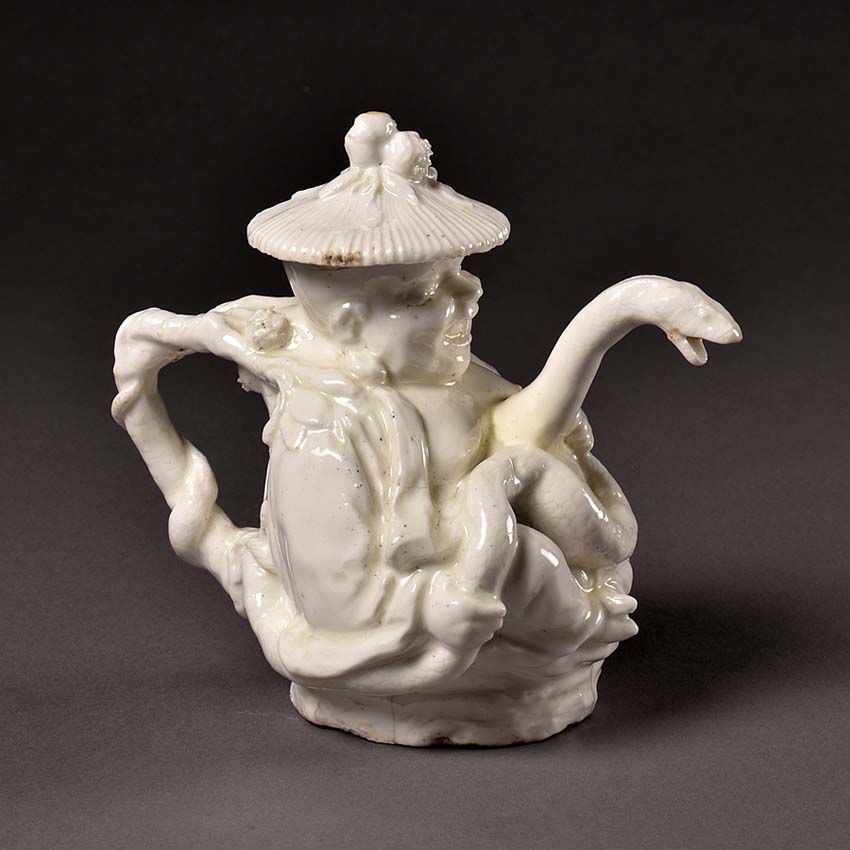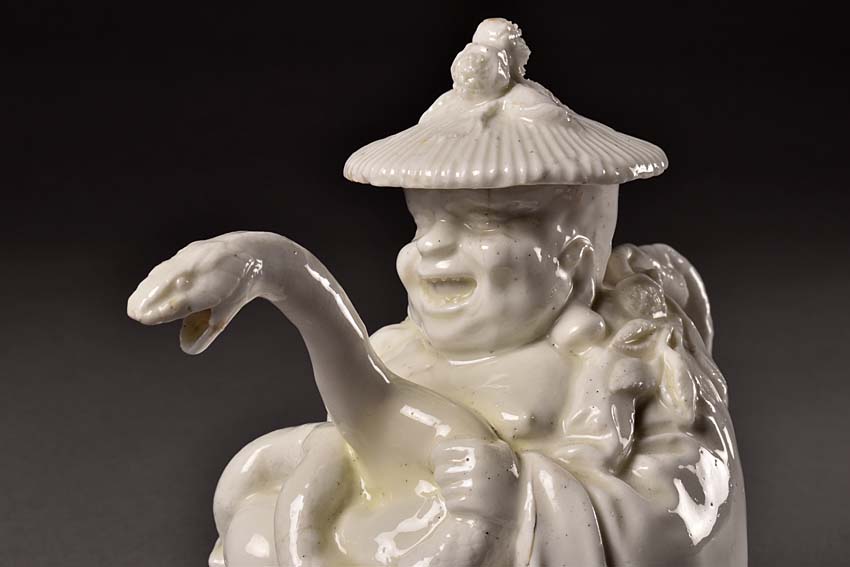“Several attempts have likewise been made here; few have made any progress, and the chief endeavors at Bow (porcelain factory) have been towards making a more ordinary sort of ware for common uses. This undertaker, a silversmith by profession, from a casual acquaintance with a [chemist] who had some knowledge this way, was tempted to make a trial, which upon progress he made, he was encouraged to pursue with great labor and expense…”[i]
This statement was made sometime between 1752 and 1759 by Nicholas Sprimont (1716-1771).[ii] Sprimont, a Huguenot silversmith from Liège, established the Chelsea porcelain factory around 1745.[iii] Under his direction, Chelsea “dominated the market” producing “some of the finest and most artistic porcelain ever made in England…”[iv] These works, “which were coveted by the wealthiest people in eighteenth-century society,” not only reflected Sprimont’s training and “eye for quality,” but his “entrepreneurial flare” as well.[v] Remarkably, during its heyday, the factory was even able to “compete with the finest ceramics that were imported from China and Japan.”[vi] Chelsea, which was located in a village of the same name just upriver from London, operated until 1769.[vii]
PORCELAIN HISTORY
When Europeans were introduced to Chinese hard paste porcelain, or true porcelain, in the fourteenth century, they were mesmerized by the material’s beauty, translucency, delicacy, and durability.[viii] It was considered an almost “magical” substance whose creation was a mystery.[ix] Until this mystery was solved, these luxury wares were often imported from the East.[x] By the turn of the seventeenth century, there was an ever-increasing amount of porcelain reaching the West with the assistance of the English and Dutch East India Companies.[xi] However, this radically changed in the eighteenth century. “The trickle…increased to a flood” with wares being imported “by the ton.”[xii] In response to this frenzy for porcelain, some European potteries also developed a version of the hard paste recipe called soft paste. Hard paste, which is a mixture of kaolin (white clay) and petuntse (feldspathic rock), is fired at a temperature of about 1400˚C.[xiii] Soft paste, on the other hand, is fired at a lower temperature and usually excludes kaolin.[xiv] Chelsea created soft paste wares that, at times, included tin oxide which produced an opaque white surface.[xv]

KAMM COLLECTION
The Chelsea example in the Kamm Collection is from the factory’s earliest and most experimental stage known as the Triangle period (1745-1749).[xvi] This rare work, which is considered a novelty teapot, depicts the Chinese god of laughter and plenty known as Pu-tai Ho-Shang or the Laughing Buddha.[xvii] Here he is seated with his legs crossed. Loose robes expose his bulging stomach, and he shares his infamous toothy grin. He holds a serpent which arches upwards creating the teapot’s spout. The snake’s tail then wraps around a tree branch which forms a looping handle. The lid is the Pu-tai’s conical hat, which is topped with a finial of berries or nuts and leaves. Chelsea created other wares that feature a Laughing Buddha, but there is one particular teapot that should be mentioned. This vessel is strikingly similar. However, instead of a snake, the Pu-tai holds a parrot which becomes the spout. An example of this teapot can be found at the Victoria and Albert Museum in London.
These two Pu-tai teapots reveal not only the influence of Chinese motifs on Chelsea, but the inspiration from French sources as well, particularly the factory of Saint-Cloud (1690s-1766) where prototypes for these wares existed.[xviii] It is believed that Sprimont would have been aware of the fancifully decorated soft paste porcelains from Saint-Cloud. He grew up in an environment “with a strong French infusion” and his “whole outlook” has been described as “French.”[xix] As one scholar stated, “the affinities of the earliest identified Chelsea productions with those of Saint-Cloud are too obvious and numerous to be the result of chance…”[xx] However, there are some differences in the appearance of the clay body. Saint- Cloud’s wares seem to have a smoother glassier surface.
Very few of these Chelsea teapots were produced. There are only five known surviving examples, including the one in the Kamm Collection. Three of those five are at the British Museum in London, the Museum of Fine Arts, Boston, and at Colonial Williamsburg in Virginia. The fifth is in a private collection.
Further Reading/Viewing:
Adams, Elizabeth. Chelsea Porcelain. London: Barrie & Jenkins, 1987.
Austin, John C. Chelsea Porcelain at Williamsburg. Williamsburg, VA: The Colonial Williamsburg Foundation, 1977.
Charleston, R.J., ed. English Porcelain 1745-1850. London: Ernest Benn Limited, 1965.
Clarke, T.H. French Influences at Chelsea. Paper read at the Victoria and Albert Museum. 15 March 1958.
Hughes, Therle G. English Porcelain and Bone China, 1973-1850. London: Lutterworth Press, 1955.
Mackenna, F. Severne. Chelsea Porcelain: The Triangle and Raised Anchor Wares. Leigh-in-Sea, England: F. Lewis Publishers, 1948.
Marchand, Suzanne L. Porcelain: A History from the Heart of Europe. Princeton: Princeton University Press, 2020.
Notes:

